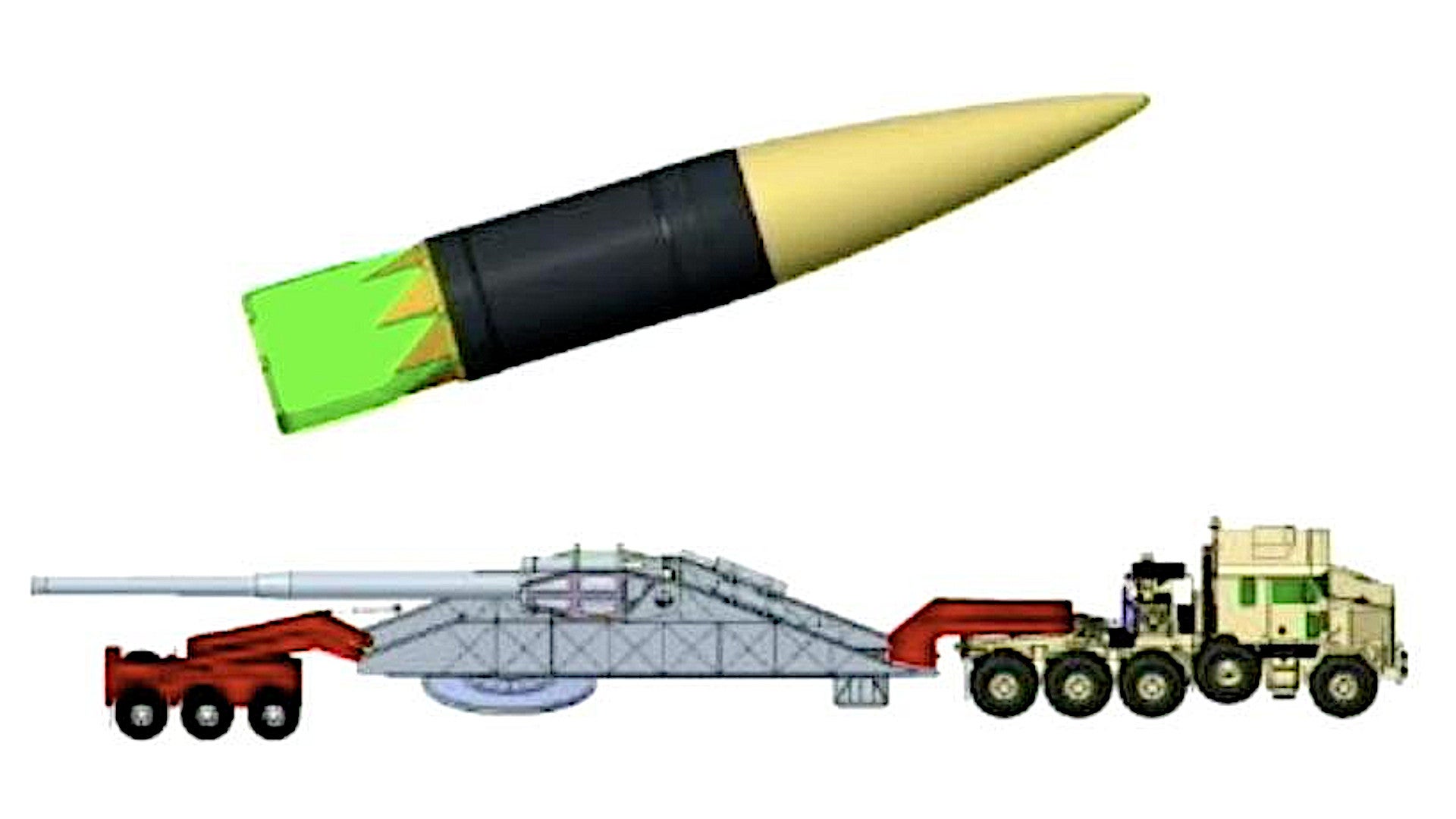The U.S. Army plans to stop major research and development work on a huge artillery piece, intended to be able to hit targets out to a range of 1,000 miles or more, by the end of this year. Instead, the service wants to move funds it would have spent specifically on this Strategic Long Range Cannon into a more general account that it could use to help mature various advanced technologies.
The update on the Army’s plans for the Strategic Long Range Cannon (SLRC) program were contained within its proposed budget for the 2022 Fiscal Year, which was released on May 28, 2021, as part of the larger U.S. military-wide budget request. In lieu of funding for the SLRC line item, the service asked for just over $72.6 million for a new account called Technology Maturation Initiative (TMI) Planning for Super-System and Technology Product Prototyping.
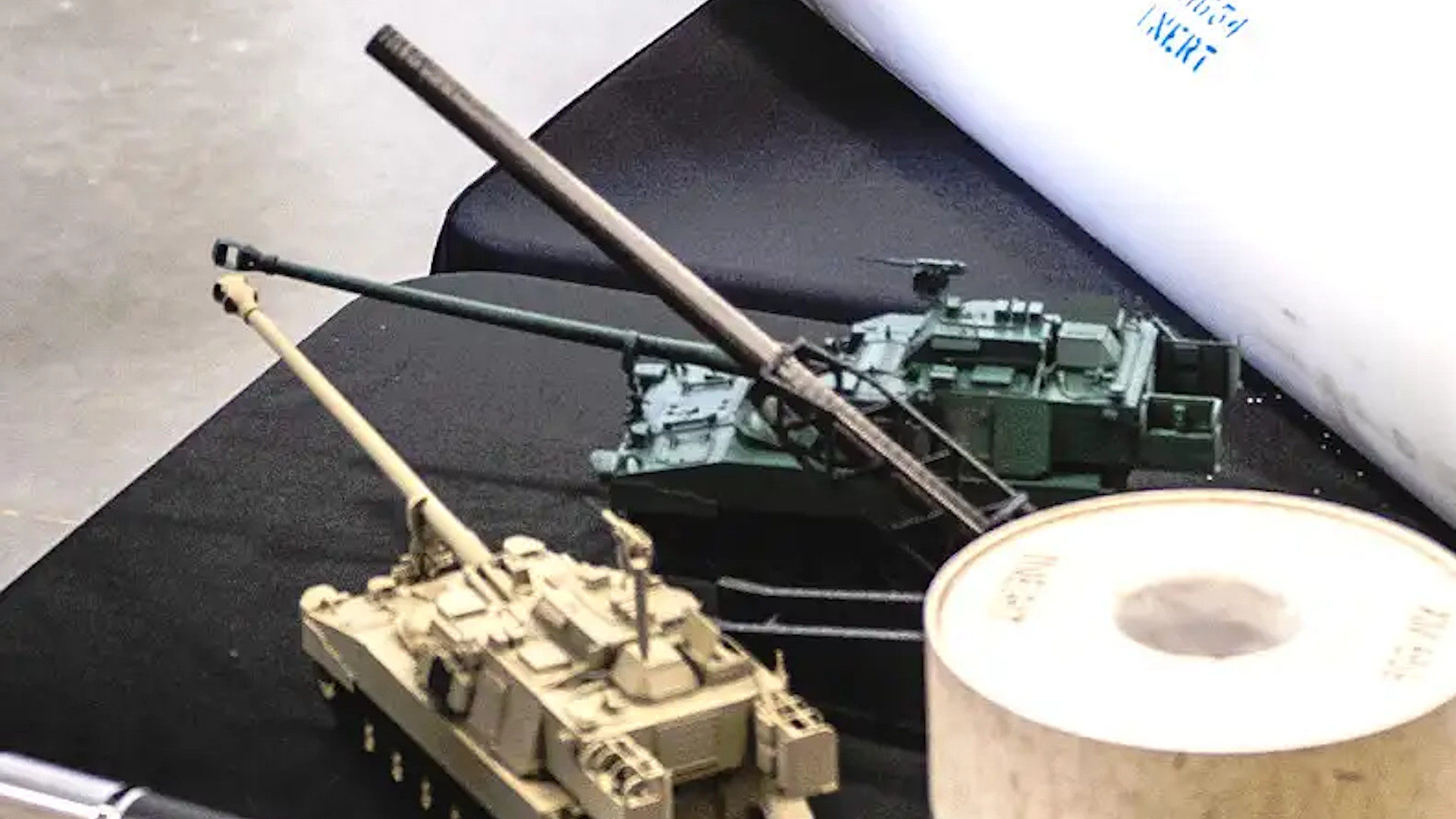
“This effort [SLRC] is projected to end in FY 2021,” the Army’s budget documents say to explain the request to “realign” this funding with the broader line item. The new, separate planning and prototyping effort “will execute prototyping in support of Soldier evaluations in potential areas of deep strike munition/munition systems, advanced navigation/networking capability, and/or advanced Soldier, vehicle, and platform capabilities.”
It is possible that this new funding stream, which includes work on “deep strike munition/munition systems,” may continue, in part, to fund certain activities related to the SLRC. However, even if this is the case, the requested $72.6 million would be spread between those efforts and the other areas of interest described in the Army budget documents. As such, this would still likely reflect a significant cut in funding for the cannon program, which had, by itself, received just over $61.8 million and almost $62.8 million in the 2020 and 2021 Fiscal Year budgets.
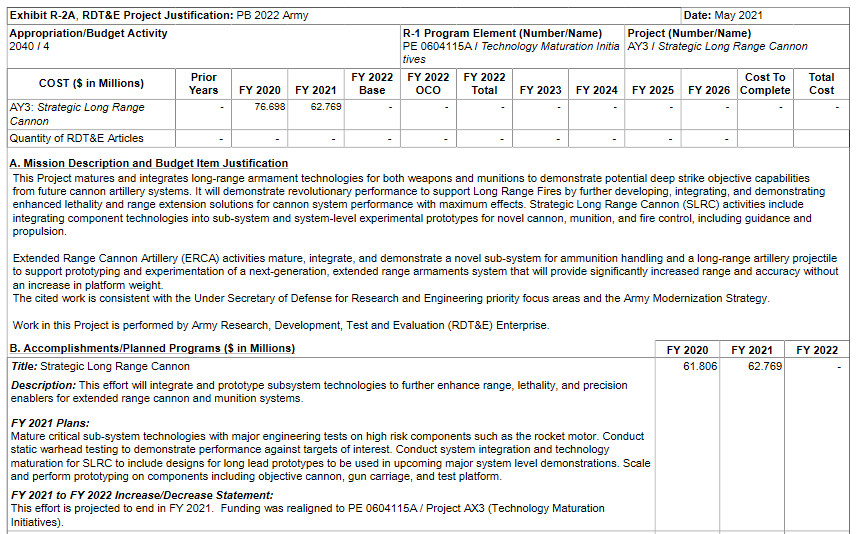

The Army does say that it plans to complete various research and development and testing of SLRC components in the current fiscal year, which ends on Sept. 30. This includes work on the very large rocket-assisted projectile that was supposed to give the cannon its 1,000-mile-plus range, as well as “system integration and technology maturation for SLRC to include designs for long lead prototypes to be used in upcoming major system level demonstrations.” The service is also looking to “scale and perform prototyping on components including objective cannon, gun carriage, and test platform.”
A graphic, seen below, showing a notional SLRC design that emerged last year showed the gun on a “platform” style mount similar to that used in conjunction with the Cold War-era 280mm M65 cannon, a weapon specifically designed to fire nuclear artillery shells that is better known as Atomic Annie. That platform was depicted attached at the front to an 8×8 Oshkosh M1070 Heavy Equipment Transporter System (HETS) tractor and at the rear to a three-axle trailing section. The implied a concept of operations similar to that employed with the 83-ton M65, wherein the weapon would be employed from a fixed position after being detached from the tractor and trail.
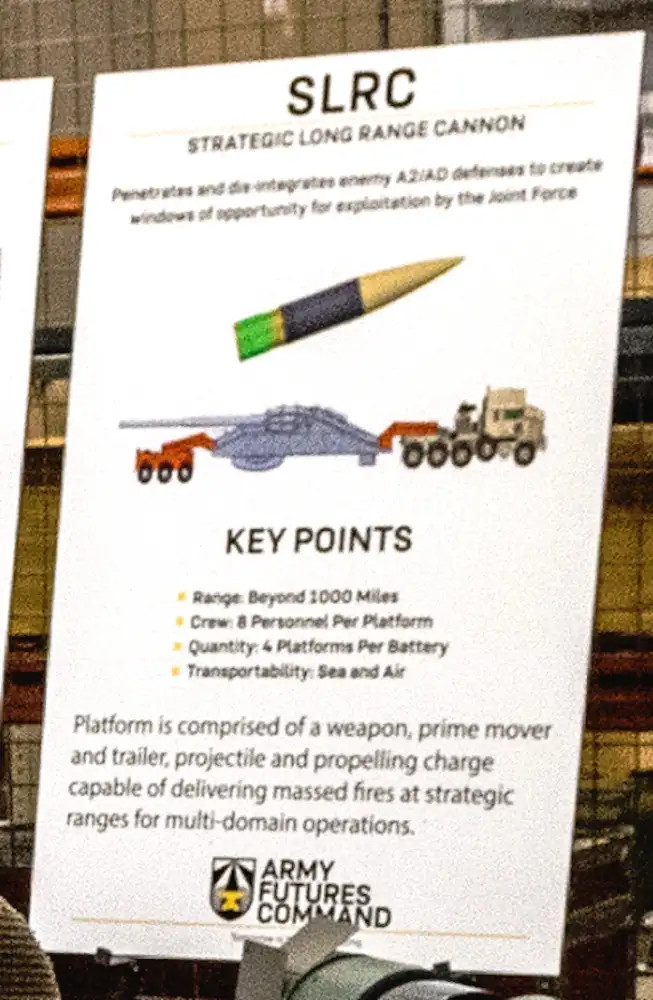

“We have to work through the design of the test asset, so we can begin to work while the objective system is being built and then work through the propulsion and bring our industry partners on to work the business end of the system, and that’s kind of where we are,” Army Brigadier General John Rafferty, head of the Long Range Precision Fires Cross Functional Team (CFT) within Army Futures Command, told Defense News earlier this year. “Then you can just imagine from here, it’s assembling the system, then scaling up everything. This is really starting small and validating the models that we’ve been using and then scaling it up to the full propellant charge, full projectile design, to get it up to the range.”
At that time, however, Rafferty revealed that work on the SLRC was largely on hold, awaiting the completion of a technical feasibility study from the independent National Academy of Sciences, and that a planned live-fire demonstration of a prototype cannon in 2023 had been all but canceled.
“It’s a big bet to see what is possible in those ranges that have an integrated cannon system and a way to shoot things that might be far less expensive,” Rafferty said. “I think that [the National Academy of Sciences study] also gives an important data point for [Army Futures Command] and for the Army senior leaders to review as an independent assessment of the feasibility of this and then we’ll be ready to continue after that.”
The Army’s budget documents do not provide any specific reasons for why it has decided now to look to close out the main SLRC account. However, this is hardly the first time the U.S. military, among others, has explored the idea of a very long-range supergun, projects that often present both technical challenges and logistical hurdles. The M65s, for instance, were ultimately only in service for around seven years, between 1955 and 1962, and were only ever assigned to units forward-deployed in Germany, Japan, and South Korea.
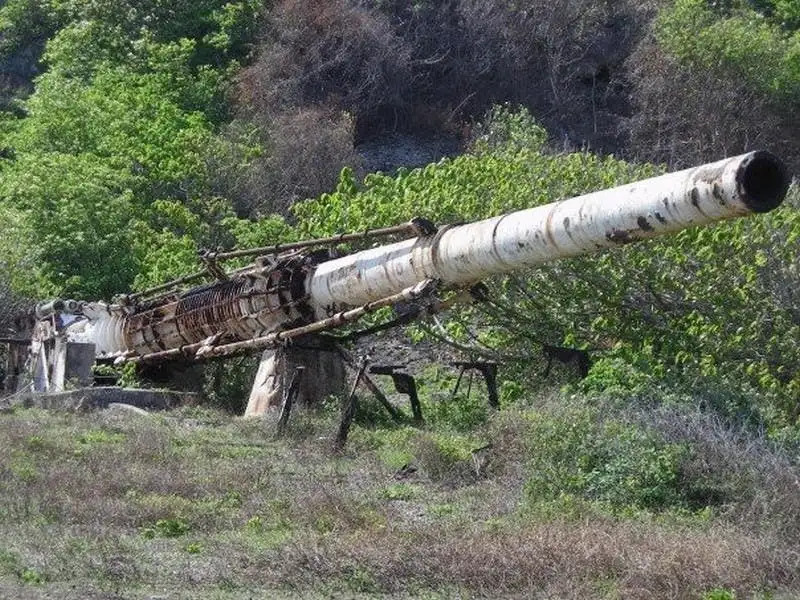
Ground-based artillery has, historically, offered significant flexibility, especially when compared to combat aircraft. Guns, as well as rocket artillery systems, are a highly efficient way to provide persistent fire support across a broad area, and are able to readily shift focus from one target to another, as long as it is within their range. They also generally have significant magazine depth and can rapidly move from one area to another, including in order to reduce their vulnerability to hostile counterattacks. They can do all of this without the cost and complexities associated with basing aircraft, which would also have to deal with issues around flying in potentially contested airspace, at multiple locations within a theater of operations.
A gun with a range of 1,000 miles or more would be able to exploit those inherent benefits to an even greater degree, as long as sufficient logistical resources existed to move what would be very heavy weapons into suitable firing positions and keep a steady stream of the large, specialized ammunition flowing to them.
At the same time, when the SLRC effort was first publicly announced in 2018, one of its biggest potential benefits was simply being a very long-range, ground-based strike weapon that was compliant with the Intermediate-Range Nuclear Forces Treaty, or INF, between the United States and Russia. That agreement prohibited both parties from deploying ground-launched nuclear or conventionally-armed cruise and ballistic missiles with ranges between 310 and 3,420 miles.
However, this impetus is now gone. In 2019, the U.S. government under President Donald Trump pulled out of that deal over Russian violations. Since then, the Army, as well as the U.S. Marine Corps, have begun investigating a variety of ground-based missile systems, including hypersonic weapons, that would have been banned under the INF. All of this can only have impacted the service’s cost-benefit calculus with regards to the SLRC, which, as Brigadier General Rafferty acknowledged earlier this year, is a very complex weapon concept.
With all this in mind, it would now appear that the Army has decided to drastically scale back its supergun ambitions, if it hasn’t canceled the project entirely.
Contact the author: joe@thedrive.com
